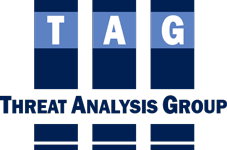Typically, security is one of those budget line items that does not contribute directly to a company’s bottom line, and often some elements of a security program can be quite expensive. Those responsible for the security function in their organizations must justify those costs. It is, therefore, necessary to become comfortable with terms such as “added value” and “return on investment” and to learn how to demonstrate security’s worth to those who control the purse strings. In particular, it is crucial to be able to show how specific security costs can have a positive impact on the organization’s bottom line.
Security is part of a company’s risk management program, and risk managers are accustomed to using cost-benefit analyses to show how transferring risk by buying insurance is a worthwhile investment. Likewise, leadership must be convinced that security measures will show a positive return on investment. That is logical and reasonable, and one way to quantify security’s positive impact on the bottom line is to use crime analysis. By analyzing past crime trends, it becomes possible to anticipate future activity to allow for a more efficient deployment of resources.
All too often, security resources are deployed arbitrarily. Security officers might work at a location two per shift, seven days a week, because scheduling is easier or simply out of habit. However, using crime analysis, it might be possible to show that one officer is sufficient for certain days or times, thus reducing full-time equivalents (and cost) significantly. In an organization with multiple locations, it might be possible to eliminate or reduce coverage at one or more locations, which could substantially reduce costs as well. Crime analysis might also indicate that more personnel are needed at certain times in some areas, but over time, even that could reap dividends in reduced incidents. The fact that an organization uses crime analysis so that it is aware of exactly what is happening, when it is happening, and where it is happening and then deploys its resources in an intelligent, data-driven way can reduce lawsuits and settlement amounts. That can be a substantial return on investment.
Security costs will always show up on the “expense” side of the income statement, but it is possible to show how security costs can reduce expenses in other areas or perhaps increase revenue. For instance, an apartment owner might see that security expenditures are offset by increased resident retention and referrals, thereby contributing quantifiable dollars to the bottom line, or a retail owner might find that improved lighting in parking areas leads to increased evening business or reduced need for security personnel. Crime analysis is one of the more effective means of achieving this goal, and it is a relatively simple and inexpensive program to put into place. It can simultaneously improve a company’s security and its net profit, and it can do so in such a way that its implementation can be justified in simple mathematical terms. In that sense, it should be an essential component of any comprehensive risk management program.
For more information, please visit: https://www.threatanalysis.com/crimeanalysis.shtml




